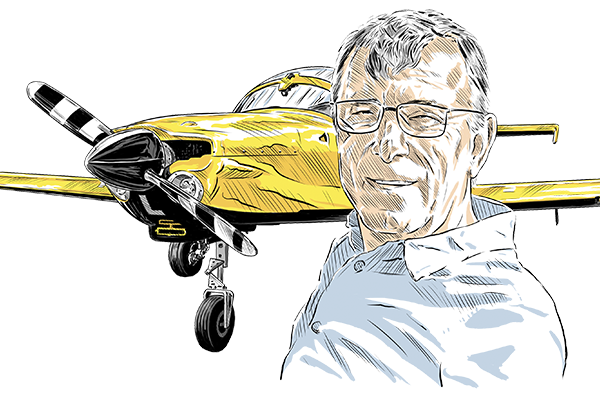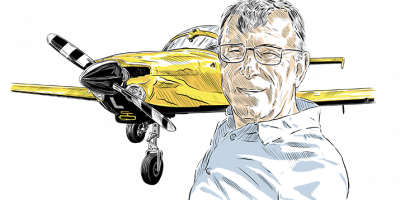Aircraft: Reims Cessna F172N
Persons on board: Pilot and two passengers
Commander’s Age: 53
Commander’s Flying Experience: 564 hours (of which 451 were on type)
The pilot was performing an introductory flight from Glasgow Airport with two passengers. On arrival at the aircraft, he expressed surprise to the passengers that a towbar used for manoeuvring the aircraft on the apron had been left attached. He completed the walk around, intending to remove the towbar last. However, he became engaged in answering a question from a passenger and did not remove the towbar.
The aircraft departed for a short flight in the local area, during which the pilot did not perceive anything abnormal. While returning to Runway 23, ATC relayed a message to the aircraft from an airport operations vehicle that something was attached to the aircraft’s nosewheel.
The pilot immediately realised it was the towbar. He landed the aircraft ‘slowly’ and vacated the runway before stopping to remove it. There was no damage to the aircraft or the towbar.
Conclusion
The pilot did not remove the towbar before departure after becoming engaged in helping a passenger during the aircraft walk around. While there was no damage to the aircraft, this incident highlights the value of threat and error management techniques in relation to ground procedures and passengers.
Nick’s analysis
The pilot in this incident suffered nothing worse than some embarrassment, but the results could well have been worse. The pilot became distracted by engaging in a conversation with a passenger at just the wrong moment, leading to the tow bar being left attached.
We all get distracted during our normal lives to lesser or greater degrees, but distraction in aviation has been a factor in many accidents, even in the present age.
Distraction is a major factor in Threat and Error Management (TEM) techniques that are encouraged throughout aviation today.
It happened to me once. During my Tornado days in the RAF, I was flying out of a base in Sardinia and was running a bit late in getting to the aircraft for the exercise slot at the local weapons range.
My ground crew assured me that he would remove the undercarriage pins for me as I completed a hasty walk-round, thinking more about the trip ahead. A quick glance to the ground crew after I got into the cockpit showed him displaying the pins to me.
A rapid start and taxi out left me just in time for take-off and I lifted off a few seconds later. As I raised the undercarriage, a solitary green light remained shining on the undercarriage panel, indicating that the left main gear was still locked down. With nothing else to be done, I fumed as I turned back to base for landing – only to find the left main undercarriage pin still in place as I climbed out of the aircraft.
Needless to say, I was mortified to have made such an error – I could attach no blame to the ground crew. I was distracted by my late arrival at the aircraft and rushing led to this incident occurring. It’s a lesson in distraction that I never forgot.
I’ve seen some interesting techniques for avoidance of distraction in critical areas. Some glider pilots rigging their aircraft will avoid all conversation with other people, and they put up a sign to say so in order to concentrate fully on the task. Medical ward staff dispensing drugs wear tabards asking not to be approached as they need to complete their tasks methodically and precisely.
As a private pilot, consider some of these techniques in the air: when required, it is often best to shut yourself off to some extent, particularly at a time of high workload or during an unusual event. You can then focus fully on the task in hand.
How to manage passengers?
For a newly qualified PPL holder, the main distraction that will need to be managed will be passengers! Unfortunately, there is no formalised training within the PPL syllabus regarding passenger management, and it’s something I encourage new pilots to discuss with instructors before they go off on early flights with passengers.
Pilots will probably come across many different types of passenger – enthusiastic, nervous, talkative, quiet – and airsick. All have to be managed safely before, during, and after the flight – and you still have to perform all of your normal functions as a pilot as you do all that.
So it’s worth thinking about your plan of action in dealing with passengers, especially if you’ve got more than one.
Pre-flight, take some time away from the passengers to carry out weather, Notam, weight and balance checks, etc, in the usual way. Let them go for a coffee, perhaps, as you do that. You could also carry out the aircraft pre-flight while they are away.
You can then take them to the aircraft, where it is best to get them seated and comfortable before starting with any checks. They might be a bit excited and ask you lots of questions: you might have to politely but firmly ask them to leave you to your checks. You can explain what you’re up to but don’t let that distract you from doing things properly.
There might be all sorts of passenger excitement during take-off and initial climb but you, as the pilot, must remain very focused on your flying on this critical stage of flight. Don’t relax your guard on your flying until you have plenty of height and distance from the airfield.
Even then, when established in the cruise never forget that flying the aircraft remains your absolute priority at all stages of the flight.
If you suffer some sort of emergency, you still need to fly the aircraft first and deal with the problem. Your passengers may become alarmed so you will have to reassure them as best you can but remain focused on flying the aircraft.
Be particularly careful as you return for landing as passenger excitement could again build up. Don’t relax until you’ve completed the landing and stopped the engine – it’s an easy time to leave the mags live as you leave the aircraft with your happy passengers.
Of course, there are many other distractions that can affect our flying – the weather, technical issues, other aircraft. These things can affect us on the ground and in the air. Try to avoid the distractions by adopting a careful and precise approach to your operation.
Take away tips:
- Use a checklist if you have one
- Never walk past a ‘remove before flight’ item with the idea of removing it later
- Manage your passengers to give yourself a chance to get things done properly
- Take a moment – perhaps just before take-off – to think whether there might be anything else that has been forgotten
- Always return to that main focus – flying the aircraft safely – at all times.
And never trust anyone else to remove an undercarriage pin!





